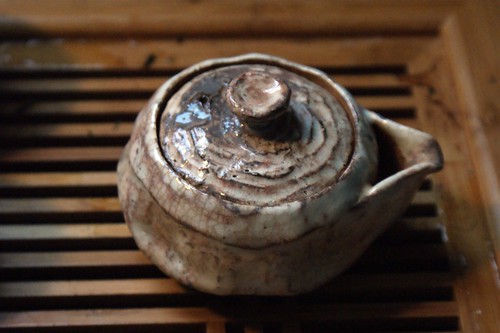Before any Hagi artisan will give explanation, let me for a few general remarks here from my own experience and some questions.
1.
Chip wrote:Not to argue, but I heard the "dull sound when thwacked" was due to the high sand content of the Hagi clay.
that is truth to clays I know. Two pieces of the same clay fired the same temperature but one of them with great sand or grog addition will give deference in sound.
2. " high fired" - well, this term can be not explicit. In 1250 C pot can be "high fired" and in 1350 C too. The porosity depends on sufficiently high firing (I do not know if that is correct in En) for ex.: I have clay which in 1200C is not taking water and 50 degrees up start to melt. In opposite another one even in 1300 is still porous.
3. language - it seems that in Japan they look on pottery from the other point of view we used too. Extremal ex. - Koie Ryoji can call yakimono columns made from aluminium cast in the ground.
4. for my better understanding I have some questions for Hagi owners:
a. you are leaving your Hagi full of water for few hours. Is there moisture on a table under a pot? and if yes does it work for wares with "ventilation" in foot ^ too.
b.you are leaving your Hagi in container full of water? Will the weigh befor and after much change?
thanks, andrzej


